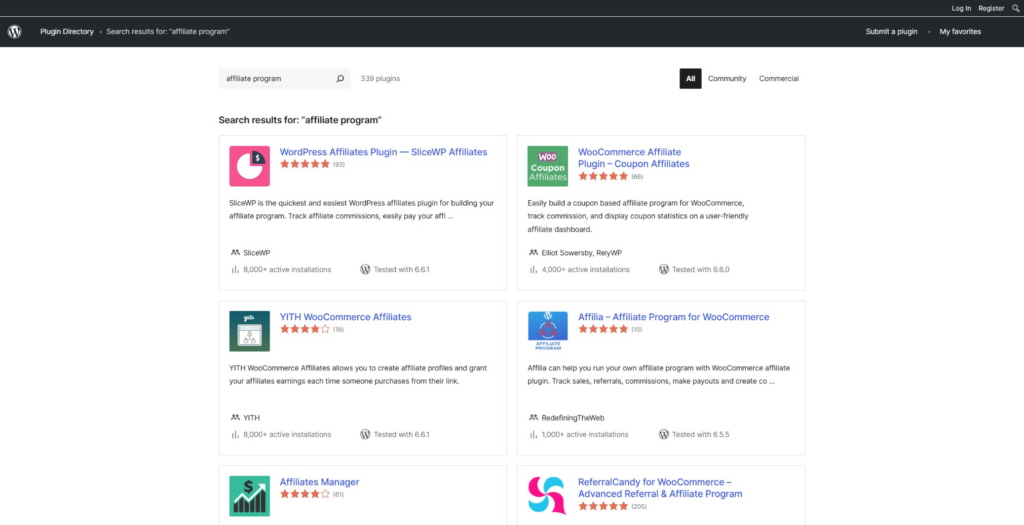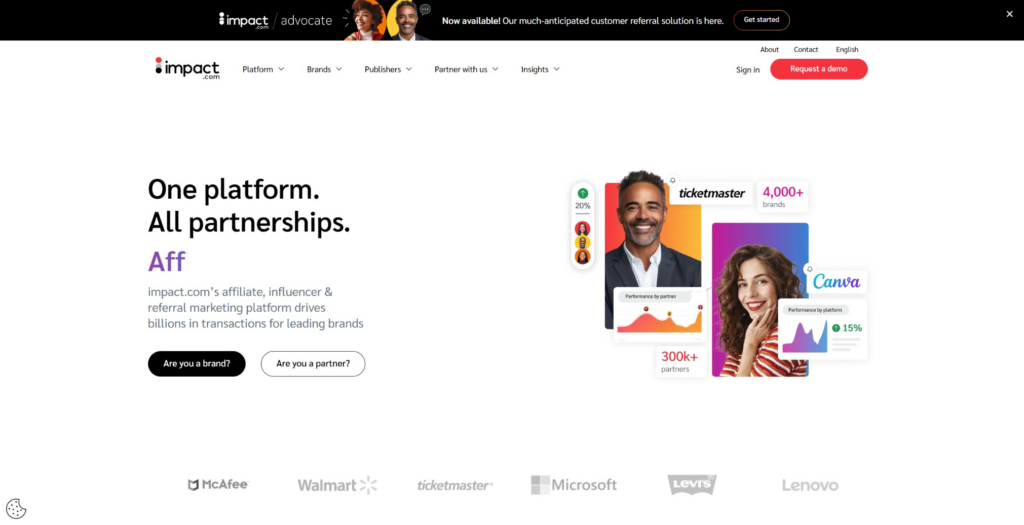Building an e-commerce website is not as difficult as it might seem. However, successfully running a website is truly challenging, and among all the tasks, marketing and promotion are the hardest. Effective promotion naturally leads to traffic, which in turn generates orders.
There are numerous marketing and promotional methods available online. The most straightforward approach is to spend money on advertising, but not everyone can afford the ad costs. Even if you can, you need to know the right methods. Otherwise, an unfortunate situation might occur where you spend money without seeing any results.
Are there ways to promote that don’t cost money or cost very little? Absolutely, and there are many such methods, including search engine traffic, social media traffic, email marketing traffic, etc. These methods generally take longer to see results but are less expensive. Another method is affiliate marketing, which is the focus of today’s discussion. This promotion strategy involves creating an affiliate program to promote your products and services.

What is Affiliate Marketing
What is affiliate marketing? Newcomers might not fully understand it yet, let me tell you briefly. Affiliate marketing involves a business joining an affiliate network or setting up its affiliate system, and then creating a program. This program includes various products or services that need promotion.
Publishers join the program, find products or services they are interested in promoting, and receive a unique link for each product. They then promote this link in any way they choose. Whenever someone clicks on their unique link and purchases the product, the publisher earns a commission. The commission is paid based on the amount or percentage set by the merchant. In other words, the publisher only earns a commission when a sale is made.
The concept of affiliate marketing was first introduced and implemented by William J. Tobin, the founder of PC Flowers & Gifts, in 1989. He even obtained a patent for affiliate marketing and information tracking, known as “Affiliate.”
Amazon Affiliate Program
In 1996, Amazon, which is now a giant in e-commerce, launched an associate program. This was essentially the precursor to the affiliate program. Back then, Amazon was just a bookstore, and if people clicked on links on associated websites and purchased books on Amazon, the associated website would earn a commission.

Although Amazon was not the first company to propose and implement the concept of affiliate marketing, its program was the first to gain widespread recognition and become a model for other businesses to establish and imitate. As a result, many people mistakenly believe that Amazon is the creator of this concept.
However, Amazon did obtain patents related to the components of its affiliate program. These patents likely do not conflict with Tobin’s patents, though I am not entirely clear on the specifics of patent law. Since Amazon began selling a full range of products, its affiliate program has indeed brought success to many individuals.
How Does the Affiliate Program Work Exactly?
I have previously given a general overview of how affiliate marketing works, where affiliates/publishers promote products and services through specific links, and merchants pay commissions to affiliates after a sale, but the reality is that a true affiliate program involves a comprehensive system. Typically, an affiliate marketing system consists of four components:
- Seller/Merchant – The seller of the products or services.
- Affiliate Network or System – The structure set up by the merchant for promotion. This includes different commission rates based on product categories, orders, or specific actions brought by affiliates, as well as fixed commissions through the use of coupons by affiliates.
- Affiliates – The primary network driving traffic. You can allow anyone to become an affiliate or implement a membership review system to evaluate applicants’ qualifications and grant authorization.
- Buyers
A picture might help you better understand this model.

The merchant, through an affiliate platform or their system, sets up products or services for promotion. A portion of the profit from these products or services is designated as the commission. Affiliates/publishers join the program and obtain specific links to promote on their websites, social media accounts, video platforms, email, or even live streams. When buyers purchase the products and the merchant confirms the sale, the affiliate receives a commission.
By now, you should have a framework in mind. The affiliate marketing model is a win-win for both the merchant and the affiliate. If an affiliate platform is added, it can even be a win-win-win situation, as buyers do not incur any additional costs when purchasing products.
The next question is: how can merchants create such an affiliate program? That’s what we will discuss next, so please continue reading.
4 Payment Models of Affiliate Marketing
Before discussing how to create an affiliate program, I think it’s essential to understand the different Payment Models of affiliate marketing to Payout to Publishers used in affiliate programs.
CPA (Cost Per Action)
Payment is based on specific actions, which do not necessarily require the customer to make a purchase for the affiliate to earn a commission. For example, some institutions or companies pay affiliates/publishers when a customer fills out a form or signs up for a free trial using their link, or pay commissions to publishers once they drive some orders, these are just some of the actions.
You can set it up so that affiliates only earn a commission when a purchase is made. I believe this model can encompass all forms of affiliate marketing.
CPS (Cost Per Sale)
Also known as PPS (Pay Per Sale), this way pays per sale with real transactions. It is the primary affiliate marketing model and carries the least risk since you only pay affiliates for actual sales. For affiliates/publishers, it is the most challenging because they only get rewarded if the customer makes a purchase.
I think this model represents the true essence of affiliate marketing. You can set the commission as a percentage of the actual profit or a fixed amount. This model works for both physical products and online services.
CPL (Cost Per Lead)
Essentially a type of CPA, CPL ensures that affiliates earn a commission without requiring the customer to make a purchase. Affiliates get paid for every user who registers or provides their contact information to the merchant. This model is undoubtedly the easiest but typically offers lower commissions.
CPI (Cost Per Installation)
CPI refers to payment per installation, mainly used for computer software and mobile apps. With the growth of smartphones, this model has also expanded. Affiliates earn a commission each time a user clicks on their link, downloads, and installs an app. While not suitable for e-commerce, it is still a form of CPA and affiliate marketing.
Understanding these payment models will help you better grasp how affiliate programs work and how to implement them effectively.
2 ways to Create an Affiliate Program
To start your affiliate marketing program, you first need an affiliate system. This can be achieved in two main ways: by installing an affiliate system directly on your website or by joining a large affiliate network.
1. Installing an Affiliate System
Using WordPress as an example, we know that WordPress is one of the most user-friendly CMS systems. Many features can be implemented through plugins, and an affiliate marketing program is no exception.
- WordPress Plugins: You can search for “affiliate program” in the “Add New” plugins section of your WordPress dashboard. Look specifically for plugins designed for affiliate programs that allow product promotion, not just affiliate links.
- Setting Up Your Program: Configure your marketing plan through the plugin settings. Initially, set higher commissions to attract affiliates since independent sites often don’t face much price comparison. Set up how to pay commissions, which will depend on the plugin you use.
- Creating an Affiliate Program Page: Create a dedicated Affiliate Program page and place it in the footer of your website rather than the header. Look at other websites for inspiration. Most sites have such a page; make your commission rates stand out.
- Promoting Your Program: Finally, publish your plan to attract affiliates to join.

Many platforms, such as Magento, also have their affiliate program plugins.
Besides plugins, there are third-party professional affiliate systems. These can install a complete affiliate system on your website. Famous examples include Elementor and Fiverr, which use third-party systems that are highly professional but also require payment, making them potentially unsuitable for small to medium-sized sellers.
Where to Find Affiliates?
Once your affiliate Program is set, it won’t be effective without people to promote it. Therefore, you should initially try to get as many people as possible to join your affiliate program.
- High Commissions: As mentioned earlier, set higher commissions and make them prominent on the page. Once your site has some natural traffic, affiliates will check these links and apply to join. If there are no barriers, they will become members directly.
- Email Outreach: Send out emails inviting interested publishers to join.
- Social Media: Share your affiliate program and links on your social media platforms, such as Facebook and Twitter.
- Forums: Post on relevant product or industry forums, letting people know how much commission they can earn by promoting your products. Interested parties will contact you or apply to become members.
The idea is to explore every possible avenue to find affiliates. This approach is often more effective than directly promoting products, as many people are attracted to the opportunity to earn money without spending any.
2. Joining a Large Affiliate Network
Another method is to promote your products on specialized affiliate marketing platforms. While this might incur higher costs, it is the fastest way to gain promotion. This is the second method of creating an affiliate program.
The advantage of this method is that you don’t need to install any system, and there are millions of publishers to promote your products. You simply apply for membership on these platforms, most of which require a setup fee. However, some platforms, like JVZoo, do not charge fees. On some free platforms, you might need to pay two commissions when a product is sold: one to the platform and one to the publisher. As long as your product has enough profit margin, this is feasible.
Here are some highly recommended affiliate networks or platforms:
- ShareASale – ShareASale is a very popular affiliate network from the United States, well-suited for small and medium-sized businesses in terms of cost and budget. It has now been acquired by Awin.
- Impact.com – Impact.com is another large affiliate program from the U.S. and is likely the largest globally. You can try their demo and contact them for specific pricing details.
- CJ – CJ is another well-known affiliate network, familiar to many in the industry, with many large merchants creating their affiliate programs on their platform.
- Awin – Awin is the largest affiliate network in Western Europe and has acquired ShareASale, marking its expansion into the North American market.
- Admitad – Admitad is the largest affiliate program in Russian-speaking countries, the Middle East, and Eastern Europe regions. This market is also substantial and should not be underestimated.

For more information, please refer to the article on popular affiliate networks.
After joining these platforms, you can start your promotion plan. These platforms already have many publishers, so you don’t need to actively seek them out. Publishers will search for products to promote, and once they find yours, they will apply. Upon your approval, they will begin promoting your product and generating orders. You can manage commission payments and other functions directly through the platform. Overall, these platforms offer comprehensive features and easy operation, which will vary depending on the platform you choose.
Conclusion
Traditional advertising typically operates on a cost-per-click (CPC) model, where you pay for each click, regardless of whether the visitor makes a purchase. In contrast, affiliate marketing is a pay-per-sale model. You don’t pay for clicks; you only pay a commission when a sale is made. This means you’re working with advertisers and collaborating with thousands of publishers worldwide. Doesn’t that sound exciting?
Of course, this still involves costs, but I believe anyone would be happy to pay a commission for sales. This model carries very low risk and creates a win-win situation. Many publishers also prefer this approach. Therefore, creating an affiliate program is quite necessary for many small and new sellers. If you have a limited budget, you can start with some free plugins or consider joining ShareASale, which is an excellent choice.

